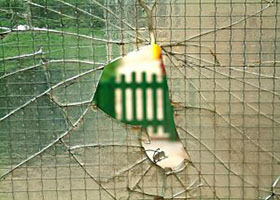

In case, like me, you missed the release of CalPERS’ much-anticipated report on the placement agent scandal last week, you really need to go back and read it. The authors describe in painful detail the corrupt and unethical behavior of former CEO Fred Buenrostro and many of his chief lieutenants within the State’s pension fund.
How could this happen? After all, this is the fund that made corporate governance a cornerstone of its investment philosophy (and influenced other funds around the world to do the same). Just have a look around CalPERS’ dedicated corporate governance website, where it notes, “We believe good corporate governance leads to better performance.”
Clearly, in the years leading up to the financial crisis, the $230 billion California public pension fund forgot to apply this important tenet to its own operations:
“After becoming CEO, Buenrostro apparently inserted himself in the investment process in a manner inconsistent with prior practice at CalPERS, pressing its investment staff to pursue particular investments without evident regard for their financial merits. For example, Buenrostro reportedly intervened in attempts by Aurora Capital Group to secure new investments from CalPERS, noting to the investment staff the substantial political benefits that might come to CalPERS by supporting an investment firm run by an individual who had just been appointed by the Governor of California to its Public.”
As a governance wonk, I can tell you that is really bad. This is precisely the kind of behavior that we seek to prevent with investment governance.
Interestingly, in addition to corruption, Buenrostro also demonstrated poor judgment:
“…Buenrostro also had another job while he served as CalPERS CEO. As set forth in the California Attorney General’s May 2010 complaint against him and others, Buenrostro worked and was paid as a ski instructor at the Squaw Valley Ski Resort in California. He also reportedly gave lessons to a number of ARVCO employees, and was apparently there occasionally on weekdays when he normally would have been expected to be engaged in the discharge of his CEO duties at CalPERS.”
So this guy was running a financial institution worth hundreds of billions and thought it wise to cut out midweek to teach skiing at Squaw? That is just bizarre! As this anecdote suggests, the report offers lots of interesting detail on the corrupt and strange practices that took place.
Anyway, I saw two big take-aways from the special review:
1) “…when a fiduciary to a pension fund accepts a gift that is provided by a third party because of the fiduciary’s connection to the pension fund, that gift rightly belongs to the pension fund.”
2) “…the best policies and procedures should always anticipate that individuals may fail to live up to their ethical and fiduciary obligations.”
Those are both wise assessments, and I think they raise an important point: Public funds should be set up, in terms of design and governance, to prevent corrupt practices and ensure the interests of employees are aligned with the fund. In other words, “golden rules” are not enough to ensure proper behavior. There must be checks and balances that ensure investment decisions are made for the benefit of the fund and not the individual with purview over the assets. In addition, the fund should have incentives that drive the kinds of behavior the fund wants from its employees (i.e., generating returns).
And, it seems, CalPERS is now well on its way to implementing a variety of reforms that will prevent corruption and unethical behavior. For example, I was recently at the fund’s headquarters and was surprised to see how this scandal had come to impact behavior at all levels of the organization. Yet, while I applaud the effort to stamp down on corruption, it seems the pendulum may be swinging too far in other direction.
CalPERS board member J.J. Jelincic recently noted that the policies the fund is now implementing will make it even harder for CalPERS to attract the best investment talent. Given that talent is one of the key touchstones of successful investment management (along with governance), this corruption reform may end up being quite costly in terms of long-run performance. But what’s the alternative? Perhaps this is the price for ensuring fiduciary duties are respected.
This post originally appeared on the Oxford SWF Project website.
